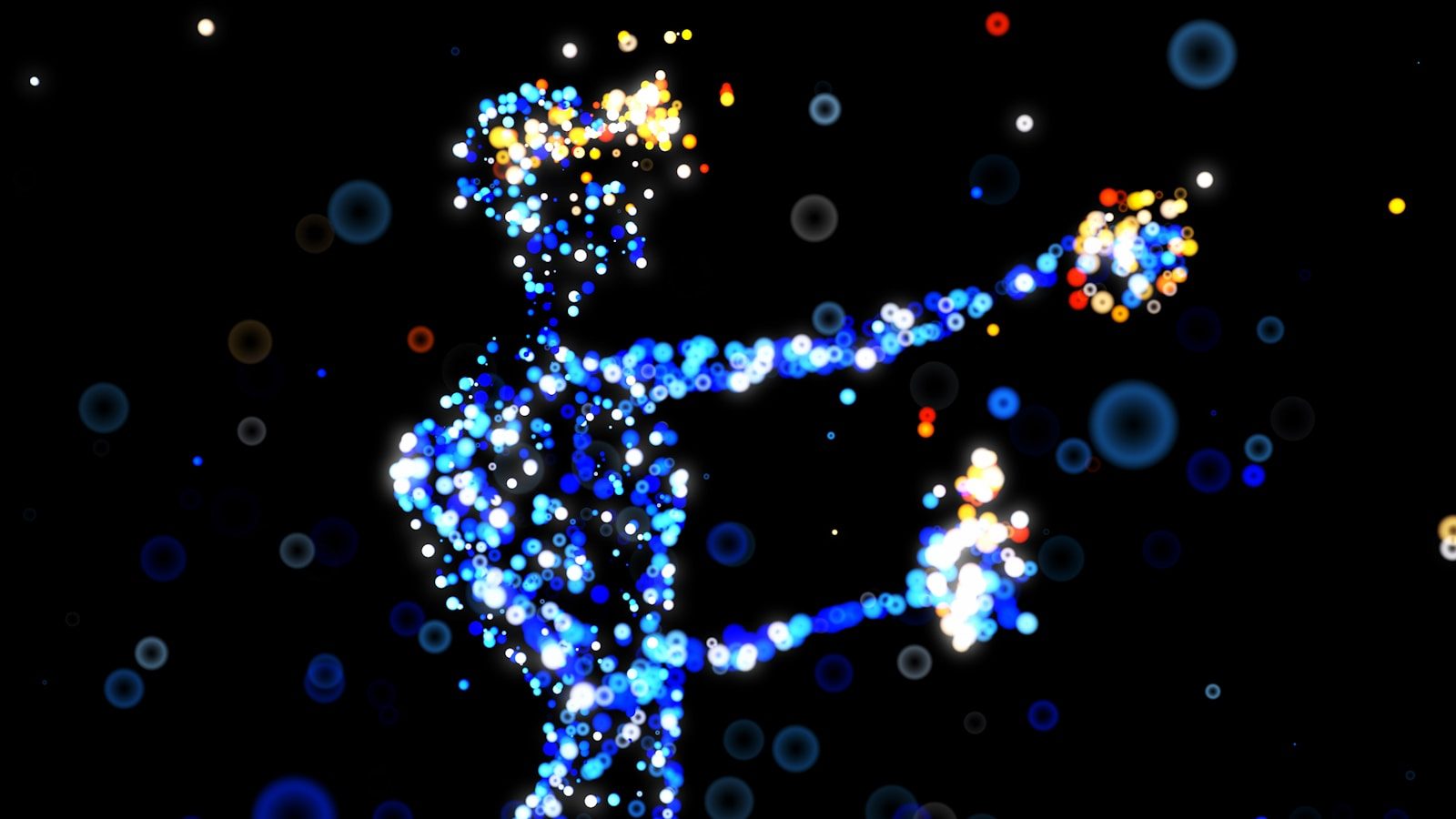Our Conscious Universe Part VI: The Finale
By Ryan Castle
In the “Our Conscious Universe” series, we’ve journeyed through a myriad of perspectives on consciousness, exploring how it manifests across different forms and scales of life. The central takeaway is profound: consciousness is not a peripheral phenomenon but rather a fundamental aspect of reality itself. We began by delving into the intricacies of consciousness theory, particularly the debates within quantum mechanics about whether consciousness causes quantum waveform collapse or if such collapse generates consciousness. This interplay suggests that either way, consciousness is deeply embedded in the very fabric of our universe, shaping and being shaped by its underlying mechanics.
Throughout the series, several themes emerge that weave the individual parts into a cohesive narrative. The interconnectedness of consciousness is a recurring theme, suggesting that consciousness is not confined to individual brains but is a fundamental aspect of all life and even the universe itself. This perspective aligns with the idea of non-duality, proposing that the universe is part of a vast interconnected system where distinctions between self and other, mind and matter, are fluid and interconnected. The recognition of consciousness in non-human entities also raises profound ethical considerations, compelling us to treat all life with respect and compassion. This theme is not only philosophical but also practical, influencing how we approach environmental conservation, animal rights, and the development of artificial intelligence.
The Centrality of Consciousness Theory: Consciousness theory is fundamental in understanding reality. Consciousness is not an isolated phenomenon but a central aspect of the universe’s functioning.[i] This perspective challenges traditional materialistic views that experience is limited to advanced brain matter, proposing that consciousness is fundamental to the fabric of reality itself. The debates within quantum mechanics highlight the profound connection between consciousness and the universe. For instance, the question of whether consciousness causes quantum waveform collapse or if such collapse generates consciousness suggests a deep interdependence. This interplay implies that our conscious observation may influence the fundamental building blocks of reality.[ii] Understanding consciousness as integral to the universe reframes our approach to scientific inquiry, emphasizing the need to incorporate consciousness into our exploration of the cosmos.
Redefining Consciousness: The behaviors of animals, plants, and fungi revealed that consciousness is not solely linked to intelligence or complex neural structures. Instead, it is about the capacity to experience, adapt, and interact with the world—a trait present in diverse forms of life.[iii] For example, crows demonstrate problem-solving skills and social behaviors indicative of conscious thought, while plants exhibit adaptive responses to their environment, suggesting a form of awareness.[iv] This broader definition of consciousness invites us to recognize and respect the complex experiences of all living beings, fostering a deeper sense of interconnectedness and empathy.
Ecosystem Consciousness: The concept of ecosystems possessing consciousness through interconnected networks challenges our understanding of life.[v] Just as mycelial networks facilitate communication and adaptation in forests, consciousness can emerge from the dynamic interactions within these systems. This perspective suggests a form of collective awareness, where the health and functioning of an ecosystem depend on the intricate relationships among its constituents.[vi] For instance, the “wood wide web” of mycorrhizal networks enables trees to share resources and information, demonstrating a cooperative and responsive system. This perspective challenges us to rethink the very nature of consciousness, proposing that it is not confined to individual organisms but can arise from interconnected systems, expanding our understanding of what it means to be aware.
Quantum Mechanics and Consciousness: The interplay between consciousness and quantum mechanics suggests that consciousness may be a fundamental aspect of reality.[vii] Quantum superposition and coherence[viii]—the ability of particles to exist in multiple states simultaneously and remain interconnected across distances—might give rise to consciousness. This idea bridges the gap between physics and consciousness studies, emphasizing the interconnectedness of all things. For example, the Penrose-Hameroff theory posits that microtubules within neurons facilitate quantum processes that contribute to conscious experience.[ix] This perspective implies that our understanding of the universe is incomplete without considering consciousness, and that consciousness itself may arise from the very mechanisms that underpin physical reality.[x] Importantly, it was established that there is nothing unique about organic compounds that suggests synthetic beings could not achieve consciousness.[xi]
Artificial Intelligence and Consciousness: The exploration of artificial intelligence (AI) and quantum function brought about a deep (and potentially over-dense) discussion about the mechanics of consciousness and quantum interactions. We examined whether AI could ever achieve true consciousness, determining there is nothing preventing artificial intelligence from consciousness other than the actual experience of qualia, the direct interaction with events in the universe rather than the mimicry of that interaction.[xii] Our conclusion was that it is unlikely that AI is currently conscious, but that we are also unlikely to recognize when it finally does become conscious.[xiii] The same incredible skill AI shows in mimicking experience will ironically conceal the moment when it actually begins to experience the world.
The “Our Conscious Universe” series invites us to reflect on the profound implications of these insights. It challenges us to view the universe not as a collection of isolated entities but as a dynamic, interconnected whole. There have been many questions raised, many scientific ideas explored, but to what end? Has this entire series been a pointless thought experiment? Far from it. There is a powerful benefit to be had from the simple reflection on interconnection and relatability, feeling connected on a real level to the animals, plants, even synthetic processes around us. There are philosophical comforts to be found in the realization of a non-dual universe, and in discovering that there is significant scientific evidence supporting the idea that consciousness is pervasive in the universe, if not intertwined with its very mechanism for being.
But there is a deeper point to this series, one that builds on all of these observations and gives us tools when we are feeling alone, anxious, helpless. In the day-to-day grind of our lives it is easy to fall into the trap of feeling like we are alone, disconnected, disparate, disjointed. Even for those of us that meditate and think on non-duality, it can be too easy to intellectualize these thoughts, reducing a worldview to an idle musing. But the idea that we are not alone, that we share conscious experiences with birds and bees, flowers and trees, even soil and computer programs, can and should fill us with a sense of awe and community. In such a reality, where we are all connected and at some level inextricable, it is not only irrational but masochistic to be cruel or greedy. The internalization of our interconnection, to animals, plants, even the inanimate world, frees us to observe everything around us with the care and respect we give to our own bodies. Kindness becomes the only rational response to the deeply flawed manifestation of consciousness within ourselves and everything else.
“We are the Big Bang waking up and observing itself exploding.”
When we reflect on the science of consciousness we see interconnection and inseparability with everything around us; when a bee pollinates a flower that is part of a fungal network, the bee is conscious, the flower is conscious, the fungus is conscious, but the entire ecosystem interconnecting them is also conscious. So too are you conscious, and yet an inseparable part of a community, an ecosystem, a planet that all qualifies as conscious. You are not only not alone, you could never be alone and will never be alone. We are intrinsically part of the same set of experiences, shaping and shaped by the quantum building blocks that define our reality. For those of us who struggle with anxiety, who feel helpless in the face of the overwhelming mountains of small stressors that are too common in modern life, there is relief in understanding the scale of our conscious universe. You are a part of defining the nature of reality itself, you are the eyes of the universe observing itself. In that context it becomes difficult, almost comical to dread social gaffes, perceived slights, and overdue work projects. The more that we understand the scope and scale of consciousness in our universe, the more relevant kindness becomes and the less relevant anxiety and loneliness become.
In the end, the journey into understanding consciousness is not just about expanding our scientific knowledge; it is about redefining our place within the universe and grasping the wondrous understanding of what reality really is. Starting from the Big Bang, our universe is an ongoing explosion. Everything within the universe is part of that explosion; whether hot bits like our sun and cooler bits like our planets, we are all flickers of heat and matter connected via quantum mechanics to the full explosion. We are the Big Bang waking up and observing itself exploding.
I recommend thinking on that perspective the next time you feel dread or anxiety tell you that you are alone or powerless. We are not just passive observers but active participants in a conscious, dynamic universe. This understanding can guide our actions, inspire our curiosity, and deepen our connection to the universe around us, if we let it.
References
[i] Penrose, R. (1994). Is Conscious Awareness Consistent with Space-Time Descriptions?. In Philosophy, Mathematics and Modern Physics: A Dialogue (pp. 34-47). Berlin, Heidelberg: Springer Berlin Heidelberg.
[ii] Hameroff, S., & Penrose, R. (2014). Consciousness in the universe: A review of the ‘Orch OR’theory. Physics of life reviews, 11(1), 39-78.
[iii] Butlin, P. (2020). Affective experience and evidence for animal consciousness. philosophical topics, 48(1), 109-128.
[iv] Cleeremans, A., & Tallon-Baudry, C. (2021). The function of consciousness is to generate experience.
[v] Money N. P. (2021). Hyphal and mycelial consciousness: the concept of the fungal mind. Fungal biology, 125(4), 257–259. https://doi.org/10.1016/j.funbio.2021.02.001
[vi] Simard, S. W. (2018). Mycorrhizal networks facilitate tree communication, learning, and memory. In Memory and learning in plants (pp. 191-213). Springer, Cham.
[vii] Li, T., Tang, H., Zhu, J., & Zhang, J. H. (2019). The finer scale of consciousness: quantum theory. Annals of translational medicine, 7(20).
[viii] Zhi, G., & Xiu, R. (2023). Quantum theory of consciousness. Journal of Applied Mathematics and Physics, 11(9), 2652-2670.
[ix] Craddock, T. J., Hameroff, S. R., Ayoub, A. T., Klobukowski, M., & Tuszynski, J. A. (2015). Anesthetics act in quantum channels in brain microtubules to prevent consciousness. Current topics in medicinal chemistry, 15(6), 523–533. https://doi.org/10.2174/1568026615666150225104543
[x] Castle, R. (2016). Factors For Identifying Non-Anthropic Conscious Systems. Cosmos & History, 12(2).
[xi] Gamez, D. (2020). The relationships between intelligence and consciousness in natural and artificial systems. Journal of Artificial Intelligence and Consciousness, 7(01), 51-62.
[xii] Kauffman, S. A., & Roli, A. (2023). What is consciousness? Artificial intelligence, real intelligence, quantum mind and qualia. Biological Journal of the Linnean Society, 139(4), 530-538.
[xiii] Dong, Y., Hou, J., Zhang, N., & Zhang, M. (2020). Research on how human intelligence, consciousness, and cognitive computing affect the development of artificial intelligence. Complexity, 2020(1), 1680845.







